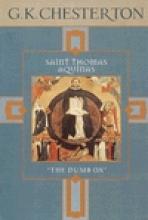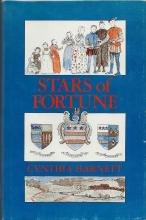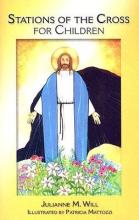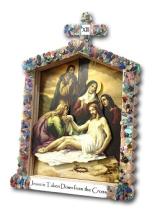No name
St. Thomas Aquinas
It does not seem adequate to compare it to a TV show but it reminds me of one of those really good PBS documentaries that gets you totally involved in something you didn't ever think was that big a deal.
Chesterton uses these different angles on Thomas and Thomism to leave you in admiration. Here was a man who by his diligence, incredible intelligence and humble love of the Truth contributed clarity to Catholic teaching - and to the WORLD (physical and spiritual). Wielding Aristotle's long forgotten philosophy Thomas makes sense of the World and the Church in a way that is profoundly true and incredibly accessible. Chesterton gives us enough of a taste to seriously whet the appetite and provides enough momentum to carry us past this book right into Thomas himself. Which is perfect. Thomas Aquinas, despite his genius (probably BECAUSE of his genius) can be understood by anyone who can read even this simple book of Chesterton's.
As Thomas was not only brilliant but humble it is fitting that Chesterton imitates the saint in this work by being both insightful and modest. Since, thankfully, Chesterton's prose is both more lucid and more delighful than my own I will defer to Chesterton's own introduction: "This book makes no pretence to be anything but a popular sketch of a great historical character who ought to be more popular. Its aim will be achieved if it leads those who have hardly even heard of St. Thomas Aquinas to read about him in better books." I would go further and suggest the reading of St. Thomas's OWN books - you will be amazed how enlightening, straighforward and refreshing it can be.
Stars of Fortune
This story is set in England in the mid 1500s and told from a Catholic perspective. As explained in the postscript, this book is the author's recreation of a legend surrounding the home belonging to the Washington family (who claims our first president as a descendant). According to the legend, Elizabeth I was once hidden in the house while fleeing pursuers. The story takes place during the tumultuous reign of Mary I (Mary Tudor, eldest offspring of Henry VIII) at which time the "old religion" has been reinstated. This is a rather subtle backdrop – one of the children notices that their housekeeper – who was a nun in hiding – cried for joy all through the Mass; their father is rebuilding parts of the house to which he secretly adds a small hiding place – presumably for priests in hiding. Some of the older boys have "romantic" notions of trying to rescue the princess and all sorts of adventures ensue. An enjoyable story in itself, it provides much substance for discussion as well.
Starting with Shakespeare
Unit Study-loving families may find in Starting with Shakespeare a very useful resource! This book is literary filled with Shakespeare-related activities! In the introduction we get to know the authors and their passionate belief in the benefits of bringing Shakespeare to elementary school. They are quite convincing with a top 20 reasons list, secrets for success and even some criticism of how memorization has been dropped from school curricula a long time ago. The introduction also helps the reader understand how the book is organized and what to expect. The first part of the book is entitled "Setting the Stage" and it offers biographical sketches on Shakespeare, very detailed ways to get the students interested, and creative tips for success. The second part presents four William Shakespeare plays, "A Midsummer Night's Dream," "Macbeth," "Hamlet," and "Romeo and Juliet" introduced for kids in a unique way alongside a plethora of resources and ideas for each one. As the publisher states: "a complete historical background, an introduction to the characters, a retelling of the story, a variety of integrated activities, verses for memorization, a complete script for class performance, and a list of resources accompany each play. Activities extend learning to history, geography, science, art, music, movement, math, and language arts." Each play is explained, character by character, plot, themes, and then told to children in prose with points for discussion in class. The authors encourage the making of a class film or video, as opposed to a performance, stating that it is simpler to use a video camera than setting up a live performance. What I enjoy about this book is that, albeit geared towards elementary school aged kids, it makes plenty of use of genuine Shakespeare language. Each play is also presented in "Will's Words--Selections for recitation", where key excerpts of the play are quoted on top of the page. Obscure words are defined and explained right below under "Say what?", and then a paragraph explains what is going on in plain English under "Kispeak". The illustrations are all made by elementary school students and some of them are quite interesting. All in all this book can be a wealth of resources for homeschool families daring the tackle the Bard of Avon in elementary or middle (or even high) school!
Startwrite Handwriting Software
System Requirements: 16 MB Ram, 20 MB Hard Disk
This is an elegantly simple computer program that resides on your hard drive just like an ordinary word processor. It allows parents and teachers to print out handwriting pages in a variety of handwriting styles, sizes and fonts. Some of your options include:
- a center dotted line
- solid text, dotted text, dashed text or text with arrows showing the proper writing direction
- how dark you want the writing printed
- a variety of fonts including standard print, italic and cursive
- Landscape or Portrait orientation
- how large you want the text to be
Please note that the user agreement allows for use on just one computer. They do offer package deals for multiple computers. You can see more about this product at http://www.startwrite.com
CD ROM for Windows 95 & above / Mac OS 8.1 & above
Stations of the Cross for Children
This small booklet can make a nice resource for a child during Stations of the Cross devotions.
Each set of double pages depicts a full page illustration in a simplified iconic format and a page of text. Under the title of each station, in bold, is the traditional prayer of the Church: We adore you, o Christ and we praise you, because by your Holy Cross you have redeemed the world.
The language is directed towards children, and it has a personal and sincere tone. In a letter format, each opens with a "Dear Jesus" greeting and ends with an "Amen." Subjects revolve around the everyday life of a child and the prayers are very nicely worded.
This is a very nice resource, especially for Lent.
Stations of the Cross for Children Poster Set
This is a very nice, very inexpensive, large-size set of the Stations of the Cross created especially for children (the same pictures as are in the Stations of the Cross for Children book, also reviewed here) appropriate for homes and classrooms. The drawings are simple (they remind me a little of Tomie dePaola's drawings) and what my husband would describe as "sanitized". Our first inclination was to think these were too sanitized, but when we compared them to our more "traditional" set (which cost us 3x as much and are about half the size), we realized that the other set, too was without blood. As a matter, of fact, my 10 year old son noticed that one of the pictures in our "traditional" set was reversed and had the wound in Jesus' side - on the wrong side.
I think many families will find this to be a very nice set to hang on their walls during Lent as a very visual reminder (and even a visual catechism in the sense that religious art of old was intended to instruct) of Jesus' death and resurrection.
Medium weight paper – each poster is approximately 11x17 inches
Sadly, these are no longer in print but you might be able to find a used set.
Stations of the Cross Grotto Kit
This well-thought-out kit is easy to use and makes a beautiful set of Stations of the Cross "grottos" when complete. The kit contains full-color art prints of each station, pre-cut wooden sticks for the frames, and gemstones to glue on for decoration. When complete, each station measures approximately 7" tall by 5" wide.
This could be a wonderful family project to make during Lent or beforehand and the set of Stations can then be used for years to come. Illuminated Ink recommends it for children 10 and up or for younger children, 6 and up, with close supervision and help from a parent.
Stepping Stones, the Comic Collection
This comic book treasury originally appeared in My Friend: The Catholic Magazine for Kids.









